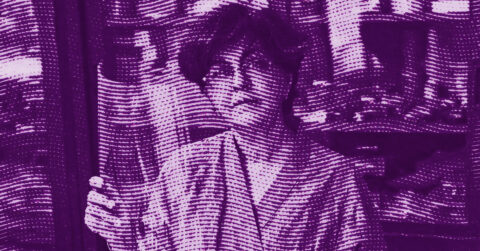Listen to me carefully, you bunch of snobs. I am going to tell you about Xu Hualing, born in 1975 in Harbin, this artist who disrupts our certainties about contemporary Gong Bi painting with a boldness that would make traditional Chinese art purists tremble.
If you think contemporary Chinese art boils down to servile reproductions of ancestral techniques, think again. Xu Hualing transforms this millennia-old tradition into a weapon of massive subversion. In her works, particularly her “Heroine” series, she manipulates the codes of Gong Bi painting with a mastery that forces us to rethink our relationship to tradition. The apparent delicacy of her strokes conceals a conceptual violence that shatters our expectations. When she paints her heroines, it is not to satisfy any conventional desire for female representation, but to create figures that challenge established norms. Her women are not passive objects of contemplation but presences that address us with a troubling intensity. I cannot help but think of what Simone de Beauvoir wrote in “The Second Sex” about the social construction of the feminine; Xu Hualing deconstructs these stereotypes with surgical precision.
Her technique is of a sophistication that goes beyond comprehension. She uses silk as a support, not out of blind respect for tradition, but as a deliberate choice to explore the limits of materiality. The transparencies she creates are not mere aesthetic effects but visual manifestos on the very nature of perception. Walter Benjamin spoke of the aura of the artwork in the age of its technical reproducibility; Xu Hualing creates a new form of aura, where tradition and contemporaneity merge in a dizzying dance. Her figures seem to float in an indefinite space, creating what Gaston Bachelard would have called a “poetics of space” decidedly contemporary.
The second characteristic of her work lies in her masterful manipulation of color and light. In her “Ruo Qing” series, she pushes the art of gradation to unexplored heights. The pastel tones she uses are not an easy aesthetic choice but a philosophical statement on the very nature of visibility. Roland Barthes spoke of the “punctum” in photography; Xu Hualing creates pictorial punctums that pierce our consciousness like silent arrows. Her works are visual meditations on evanescence, where every shade of color becomes an argument in a broader debate about the nature of representation.
The use she makes of photography in her creative process is not a mere technical tool, but a profound reflection on the nature of the image in our contemporary society. When she overlays her meticulous paintings with photographic elements, she is not merely mixing mediums, she is creating a new visual syntax that transcends traditional categories. Susan Sontag would have recognized in this work a fundamental reflection on the status of the image in our saturated visual culture.
Her compositions, dizzyingly complex, play with our perceptual expectations. The hair of her figures, painted with obsessive precision, become metaphors for the complexity of contemporary identity. Each strand is a thread in a larger tapestry that speaks of the feminine condition, tradition, and modernity. Maurice Merleau-Ponty spoke of the phenomenology of perception; Xu Hualing’s works are exercises in pictorial phenomenology that challenge our very way of seeing.
The way she treats space in her recent works is revolutionary. By removing the traditional contours of Gong Bi, she creates transition zones that challenge our usual understanding of form. These intermediate spaces are not voids but fields of tension where a silent battle between tradition and innovation plays out. This is what Gilles Deleuze would have called “smooth spaces,” zones of pure potentiality where traditional hierarchies dissolve.
Her work on the series “Between” pushes this reflection on space and form even further. The figures she presents there seem suspended in a state of perpetual transition, like specters haunting the boundaries between materiality and immateriality. This approach recalls what Jacques Derrida said about “différance,” these works exist in a state of perpetual différance, refusing any definitive fixation of meaning.
Superficial critics might see in her work a simple updating of the Gong Bi tradition. They are grossly mistaken. What Xu Hualing achieves is a radical redefinition of what contemporary Chinese painting can be. She does not simply modernize a tradition; she makes it explode from within to liberate new expressive possibilities. Each of her works is a silent manifesto proclaiming the possibility of an art that is both deeply rooted in tradition and resolutely turned toward the future.
What makes her work so important in the current context is that she transcends the easy dichotomies between East and West, tradition and modernity. She creates a visual language that speaks to our time while maintaining a profound historical awareness. Her art is not a superficial fusion of styles but a deep synthesis that opens new paths for contemporary painting.
To all those who think that traditional Chinese painting is an art frozen in the past, I say: look at Xu Hualing’s work. She shows us that tradition is not a straitjacket but a springboard toward new forms of expression. Her oeuvre is living proof that contemporary Chinese art does not need to mimic the West to be relevant; it can draw from its own roots to create something radically new.
















